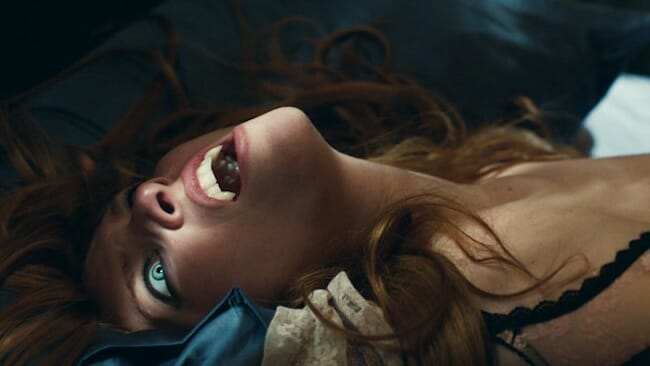Kiss Of the Damned

Vampires have always been associated with sex. From the sexual awakening of Lucy and Mina in Bram Stocker’s Dracula, to the homoeroticism in Interview with a Vampire, the genre has, in many ways, been more about the exploration of human desire than it has been about blood-sucking.
Twilight hijacked the genre and proposed that sensitive, millennial vampires could choose to eat animal blood, make nice with humans, and enter into monogamous relationships for all eternity. In Stephanie Meyers’ world, vampires have the ability to turn from their natural inclinations in order to fit in with Protestant America.
In Xan Cassavetes’ Kiss of the Damned, these two paradigms are pitted against each other.
Djuna (Josephine de La Baume) is a beautiful european ginger who lives in a palatial mansion by a lake. She sleeps by day and spends her nights hunting wild animals in the surrounding park lands and watching black-and-white movies. Then she meets Paolo (Milo Ventimiglia), a writer with washboard abs and a penchant for nudity. From the time they lock eyes in a seedy video store, Djuna is overwhelmed by her conflicting desires both to bone him and drain him.
The film is packaged like a love story: girl meets boy, girl debates whether to sleep with boy, to snack on boy or to turn boy into a vampire to live with forever. But this is only the beginning—the first 25 minutes. Choosing the third option, mid-coitus, Djuna transforms Paolo into a vampire like herself. Beautiful and eternally young, it seems like the two are destined for perpetual happiness.
-

-

-

-

-

-

-

-

-

-

-

-

-

-

-

-

-

-

-

-

-

-

-

-

-

-

-

-

-

-

-

-

-

-

-

-

-

-

-

-








































